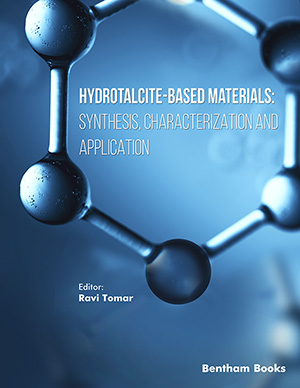
Abstract
Background: Valerian officinalis is a variant of herbaceous flowering plants in the Caprifoliaceae family, members of which can be generally called valerians. Valerian is derived from Valerius, the Latin term “valere”, which means health or well-being. It is used as a sedative and anxiolytic in many countries. The beneficial effects of valerian have always been controversial due to inconsistent clinical trial results. Valerian contains more than 150 chemical constituents. Valerian exhibits sedative, anxiolytic, and antispasmodic activities, and is used to treat various diseases.
Objective: The main aim of this study was to gather knowledge on this herbal plant, its chemical constituents, and how they can be used to treat the most common diseases, such as depression, anxiety, headache, insomnia, etc.
Result: Studies show that valerian is used to treat cardiac arrhythmia, sleep disorders, depression, and headaches, as this plant possesses sedative, anxiolytic, and antispasmodic activities.
Conclusion: This review has explored the different types of studies conducted on valerian, and with their help, we can learn more about its activities and medicinal uses. Additionally, this review paper includes the recent patents on this herbal plant.
Keywords: Valerian, anxiolytic, sedative, chemical constituents, heart palpitations, Caprifoliaceae family.
[PMID: 17054208]
[http://dx.doi.org/10.1055/s-2007-1014295] [PMID: 7972346]
[http://dx.doi.org/10.1055/s-2006-959740] [PMID: 17236012]
[http://dx.doi.org/10.1016/j.jep.2021.114262] [PMID: 34116188]
[http://dx.doi.org/10.1016/S1389-9457(99)00015-5] [PMID: 10767649]
[http://dx.doi.org/10.46624/ajptr.2020.v10.i1.013]
[http://dx.doi.org/10.1155/2011/891819] [PMID: 21151614]
[http://dx.doi.org/10.22159/ajpcr.2018.v11i1.22588]
[PMID: 8573216]
[http://dx.doi.org/10.1023/A:1022576405534] [PMID: 10555777]
[http://dx.doi.org/10.1213/01.ANE.0000096189.70405.A5] [PMID: 14742369]
[http://dx.doi.org/10.1055/s-2008-1081343] [PMID: 18704879]
[http://dx.doi.org/10.1016/j.biopha.2017.05.075] [PMID: 28551543]
[http://dx.doi.org/10.2147/NDT.S50371] [PMID: 25228809]
[PMID: 5672328]
[http://dx.doi.org/10.1211/0022357991772772] [PMID: 10411208]
[http://dx.doi.org/10.1016/0378-8741(88)90123-7] [PMID: 3287008]
[http://dx.doi.org/10.1055/s-2007-971547] [PMID: 7255569]
[http://dx.doi.org/10.1007/s11064-009-9917-8] [PMID: 19191025]
[http://dx.doi.org/10.1016/S0091-3057(03)00121-7] [PMID: 12895671]
[http://dx.doi.org/10.1155/2015/947619] [PMID: 26788113]
[http://dx.doi.org/10.1016/j.jep.2013.11.017] [PMID: 24269774]
[http://dx.doi.org/10.1021/jf0353990] [PMID: 15186117]
[http://dx.doi.org/10.3390/molecules15096411] [PMID: 20877232]
[http://dx.doi.org/10.2174/1573401317666210906140834]
[http://dx.doi.org/10.3390/ijms141123129] [PMID: 24284402]
[http://dx.doi.org/10.1365/s10337-008-0921-y]
[http://dx.doi.org/10.1016/j.jep.2005.05.010] [PMID: 16002246]
[http://dx.doi.org/10.1111/j.1744-6163.2002.tb00663.x] [PMID: 12385080]
[http://dx.doi.org/10.1021/np50037a003] [PMID: 4009183]
[PMID: 32523884]
[http://dx.doi.org/10.1016/j.jep.2020.113299] [PMID: 32841694]
[http://dx.doi.org/10.1016/j.jep.2009.11.002] [PMID: 19900527]
[PMID: 25302309]
[http://dx.doi.org/10.1016/j.phymed.2007.11.027] [PMID: 18160026]
[http://dx.doi.org/10.1016/j.phymed.2009.10.020] [PMID: 20042323]
[http://dx.doi.org/10.1248/cpb.40.758] [PMID: 1611689]
[http://dx.doi.org/10.1016/j.sleep.2008.02.001] [PMID: 18482867]
[http://dx.doi.org/10.1016/j.jamda.2006.11.001] [PMID: 17498609]
[http://dx.doi.org/10.4103/0975-7406.129174] [PMID: 24741277]
[http://dx.doi.org/10.4103/0975-7406.103272] [PMID: 23248568]
[http://dx.doi.org/10.4155/fsoa-2017-0061] [PMID: 29134131]
[http://dx.doi.org/10.1186/1472-6882-12-223] [PMID: 23171285]
[http://dx.doi.org/10.1007/s11064-008-9749-y] [PMID: 18512151]
[http://dx.doi.org/10.29252/wjps.7.3.345] [PMID: 30560075]
[PMID: 23009985]
 11
11 4
4




























